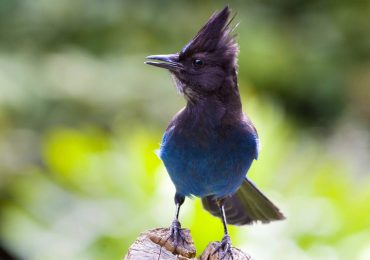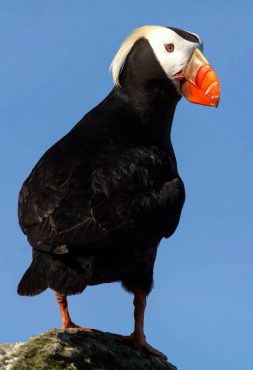
When summer guests visit West Sound country, many of them are interested in seeing some Northwest birds. Locals take these birds for granted because they are familiar with them — and it’s easy to think these birds are well known in other regions too.
One of those birds is so much a part of our area’s waterfront scene that it isn’t given much attention — except for visitors who have never seen one before. Guests from Australia recently asked, “What kind of gulls do you have? They could eat two of ours!”
Not quite, but our glaucous-winged gull is a big bird. Australia’s common gull is small, about one-third the size of ours. Known as the silver gull, it is about the same size as our mew gull. The mew is also seen throughout the Pacific Northwest, but isn’t as easy to see as its larger cousin.
The name “glaucous-winged” is from the Greek word “glaukos,” meaning graying. This is a reference to the bird’s pale-gray mantle and wings. Even its wingtips are light gray. Most gulls have black wing tips. Glaucous-winged gulls are easy to see and point out to visitors unfamiliar with Northwest flora and fauna.
Our Steller’s jays are always worth showing off to someone new to the West. This jay can be seen throughout the West in the habitat it prefers.
There are Steller’s jays in the mountains of Nevada and Arizona, but they are a different race. This is most noticeable when you look at their eyebrows. Our jay has blue eyebrows. Southwest birds have white eyebrows.
If your guests are from the Northeast or the Southeast, the jay they recognize is the true “blue” jay. Many people refer to the Steller’s jay as a blue jay but the Eastern bird is the official owner of that title.
All jays are anything but shy so keep a supply of peanuts handy and show your guests these noisy but entertaining birds. Their name honors the naturalist who was the first person to record their existence. Wilhelm Steller was the naturalist on Vitus Bering’s voyage of exploration along the coast of Alaska. Both the Steller’s sea lion and the handsome duck, Steller’s eider, bear his name.
Both the mountains and the coast are popular trips when showing off this part of the country. They can be enjoyed in a day, or longer if time allows.
If plans include a trip to the country’s most northwestern point of land, you head for Neah Bay. It’s a long drive so staying overnight on the Olympic Peninsula makes for a more relaxing trip. Probably one of the most unique birds seen in our state is the tufted puffin. The best area for showing this bizarre but attractive bird to someone from another region is near Neah Bay. They nest on Tatoosh Island.

There is a beautiful walk that takes you through old-growth coastal rainforest to viewing platforms where you can look out on the dramatic, rocky coast. The island and the surrounding waters offer sightings of the puffins and other interesting water birds. Pigeon guillemots, common murres and pelagic cormorants also nest in this area.
During the summer months, the puffin activity is good because they are busy feeding their young with fish caught in the waters surrounding Tatoosh. Just look for a bullet-shaped bird flying by at warp speed. Small fish are often seen hanging from its mouth.
Hanging baskets full of fuchsia plants, petunias, verbena and other hummingbird-attracting flowers dress up the summer yard scene. They also provide an opportunity for summer guests to see our two hummingbird species.
While the Anna’s hummingbird is familiar to visitors from the Southwest, our tiny rufous can be new birds for many people. They spend the summer with us and raise their families here. Hang a syrup feeder or two near the flowering baskets and your guests can get a good look at both species.
The chestnut-backed chickadees we enjoy all year are tiny celebrities among our bird population. There are chickadees throughout North America but the chestnut-back’s range is the Pacific Northwest, from Southeast Alaska to California’s central coast. Black-capped chickadees also come to our feeders but they can be seen in many other parts of the country including the east.
Different regions have different chickadee species. These range from Alaska’s boreal chickadee to the Carolina chickadee. Our chestnut-backed may be well known to those of us who feed birds, but it is not common.
None of our “common” Northwest birds are common. They are familiar to us but can be very special and interesting to visitors. Summer is the perfect time to introduce them to each other.




























Comments